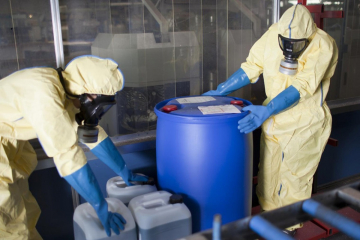In November of 2016, the EPA finalized updates to Section 608 of the Refrigerant Management Regulations. These changes affect professionals who interact with refrigerants as well as owners/operators of refrigerant containing equipment.
The updates became effective on January 1, 2017. The following is a summary of the updates:
General
1. Requirements extended to cover substitute refrigerants, such as HFCs. Previously exempted HFCs remain exempt with the regulation update.
- Extended sales restrictions to include HFCs and other non-exempt substitutes.
- Exception for small cans containing less than 2 pounds for motor vehicle air conditioner servicing.
2. Lower annual leak rate thresholds:
- Industrial Process Refrigeration – decreasing from 35% to 30%.
- Commercial Refrigeration Equipment – decreasing from 35% to 20%.
- Comfort Cooling Equipment – decreasing from 15% to 10%.
Owner/Operator Requirements
1. New recordkeeping requirements:
- Documentation of the full charge of appliances.
- Records citing when maintenance was performed, when refrigerant was added or removed, when leak inspections were conducted, and when verification tests were conducted.
- Automatic leak detection systems users must document that the system is installed and calibrated annually and record leaks identified by the monitoring system, including the time and location of the leak.
- Retrofit/retirement plans are required to be maintained as well as requests submitted to EPA to extend repair/retrofit deadlines.
- Documentation of when a system was temporarily taken out of service to suspend a repair deadline, if applicable. Corresponding documentation must be maintained when refrigerant is added back into the appliance and it is brought back on-line.
- Records to demonstrate a seasonal variance.
- Reports for appliances identified as leaking 125% or more of their full charge within a calendar year.
2. New reporting requirements:
- Quarterly/annual leak inspections or continuous monitoring devices for the refrigeration and air-conditioning equipment that have exceeded the threshold leak rates described above.
- Owners/operators must submit reports to EPA if systems containing 50 or more pounds of refrigerant leak 125% or more of their full charge in the duration of one calendar year.
- Verification tests must demonstrate that leaks were successfully repaired. If either verification test fails, owners/operators may conduct as many additional repairs and verification tests as needed within the allotted 30-day repair period. The repair period can be extended to 120 days if an industrial process shutdown is required.
Technician Requirements
1. Updated certification exams for technicians:
- Technicians must be certified under updated certification exam by January 2018.
- Technicians are being required to maintain a copy of their certificates at their workplace for a minimum of three years after they cease technician work.
2. Recovery/recycling equipment to evacuate ODSs or substitute refrigerants to levels specified in the regulations must be certified by January 1, 2018.
3. Technicians must keep a record of refrigerant recovered during system disposal from systems with a charge of between 5 and 50 pounds.
4. Follow-Up Verification Testing:
- Beginning January 1, 2019, performance and documentation of both an initial and follow-up verification test of leak repairs is required.
5. Initial verification testing must be performed before any additional refrigerant is added to the appliance.
- A follow-up verification test must be performed only after the appliance has returned to normal operating characteristics and conditions.
- For commercial refrigeration and industrial process refrigeration:
- Appliances with 50-500 pounds must be inspected once per calendar year until the owner/operator can demonstrate compliance through leak rate for four quarters in a row.
- Appliances with more than 500 pounds require inspection once every three months.
- Comfort cooling:
- All appliances containing 50 pounds or more of charge must per inspected once per calendar year, until the owner/operator can demonstrate compliance through leak rate calculations.
- If the leak rate still cannot be brought below threshold, owners/operators must create a retrofit or retirement plan for the appliances.
Want more news and insights like this?
Sign up for our monthly e-newsletter, The New Leaf. Our goal is to keep you updated, educated and even a bit entertained as it relates to all things EHS and sustainability.
Get e-Newsletter


